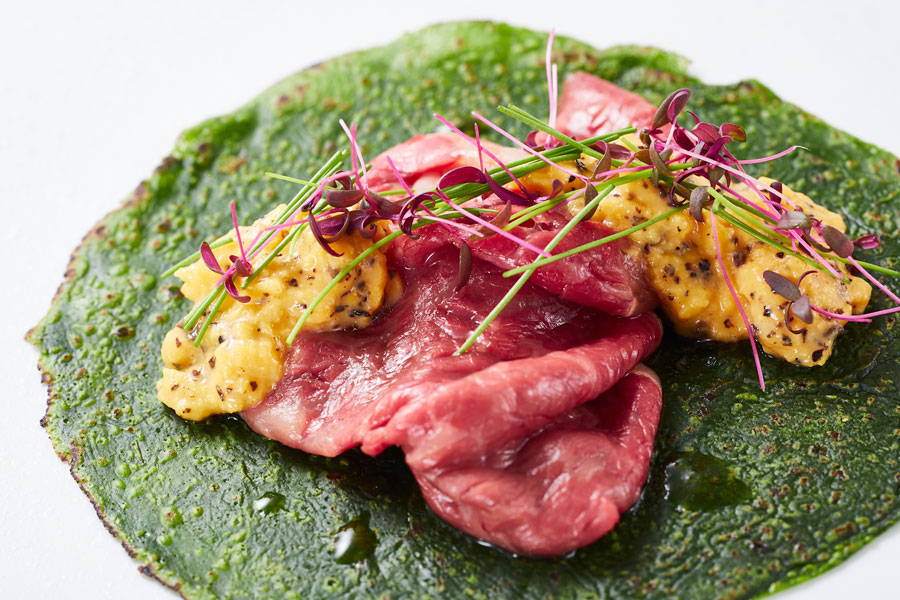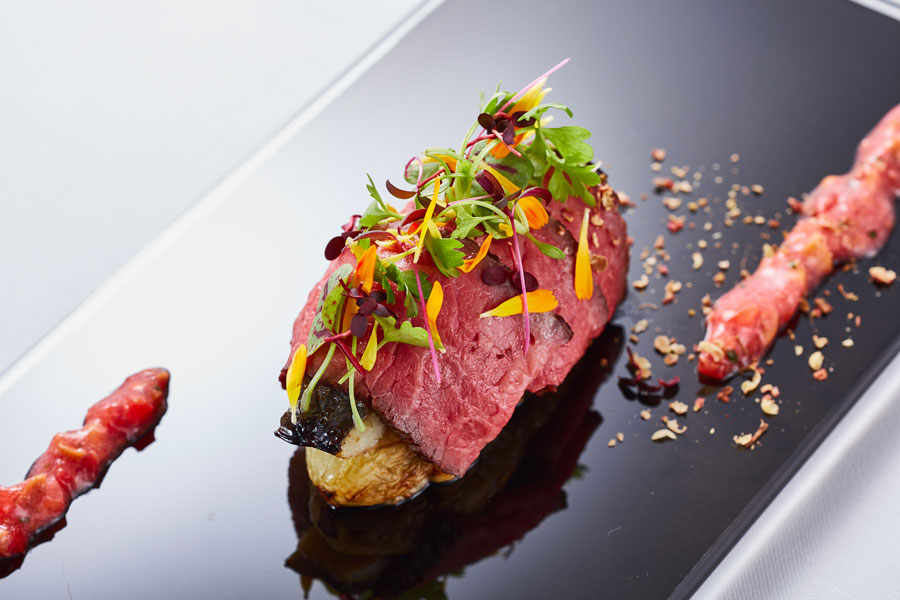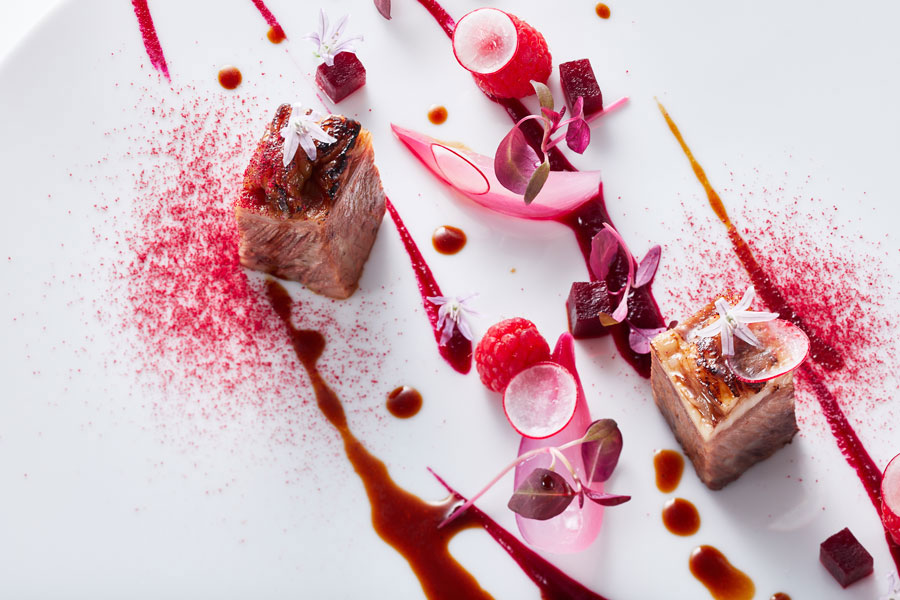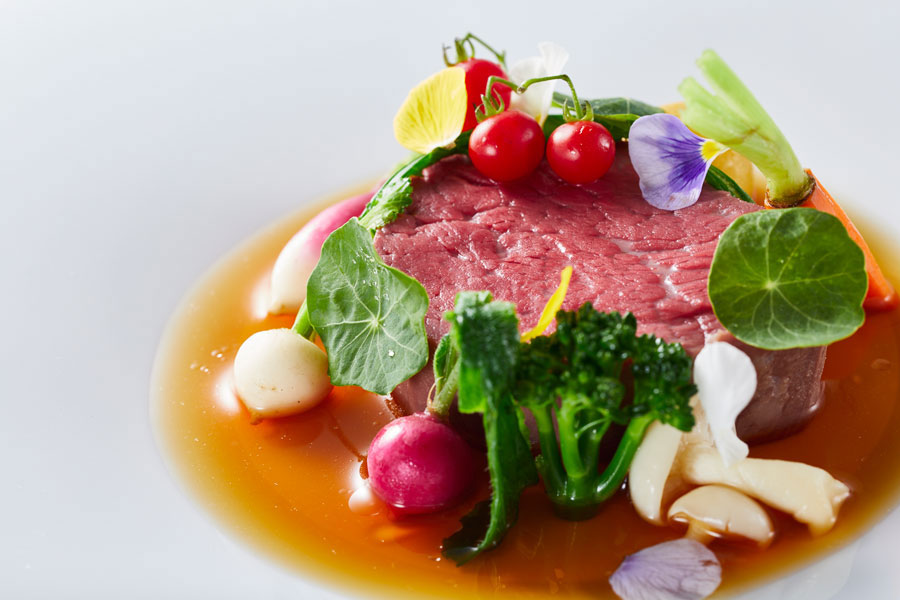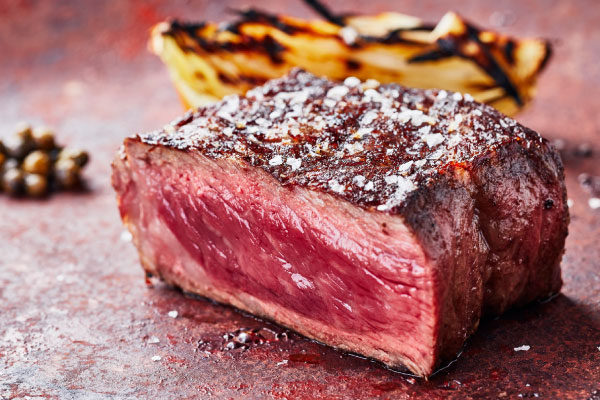AMOUR (French Restaurant in Hiroo, Tokyo)
Tokyo, the capital of Japan. With the approaching 2020 Summer Olympics, Tokyo is growing in popularity as a travel destination for foreign tourists. The political, economic, and cultural center of Japan, Tokyo is also a world-renowned gourmet city. Tokyo is a crossroads for the food cultures of the east and west, and is home to numerous famous restaurants. Tokyo is also home to a new, unique genre - "Japan-inspired French cuisine". A pioneer of this culinary movement is Yusuke Goto, executive chef at popular Tokyo restaurant Amour. We spoke with Chef Goto about is his pursuit of the culinary arts and his preference for N34.
Profile of "Amour"
"I believe that by providing Japan-inspired French cuisine, there is true meaning in my work as a chef here in Tokyo."
Chef Goto was just 20 years old and yet a cook-in-training when he decided he would dedicate himself to becoming a French chef. What knowledge is required to become a chef? It is about more than just cooking. Being successful also requires restaurant management skills. Goto became focused on his goal of becoming a chef, a dream he realized at the age of 30. From there, Goto landed at various restaurants, honing his skills as a French chef.
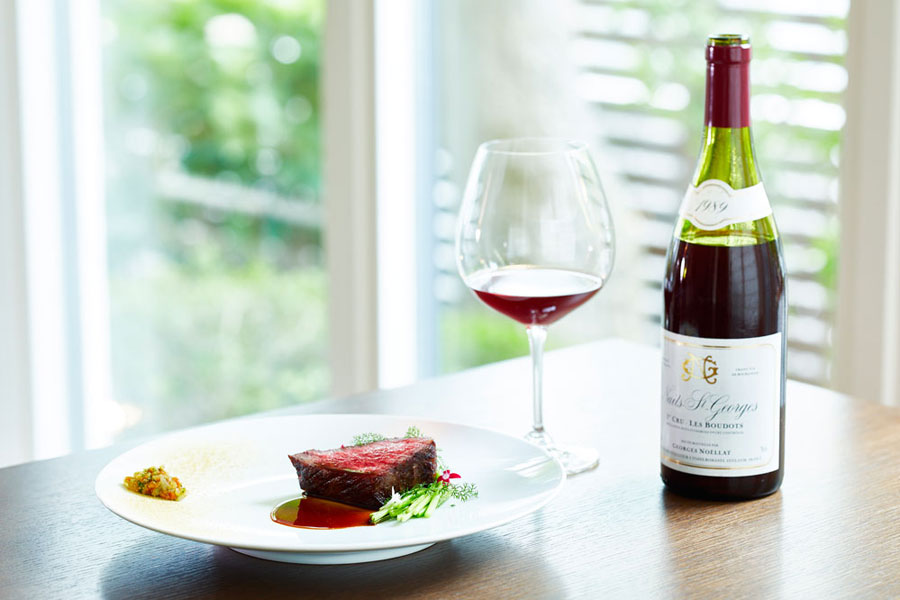
Chef Goto soon knew he wanted to create his own ideal restaurant. He gathered investors and created a plan for opening his own restaurant in Tokyo but this plan was derailed due to the Great East Japan Earthquake, which caused unprecedented damage to Northeastern Japan in 2011. After working part-time jobs to make ends meet, a new investment offer presented a second chance for Goto, and the result was the opening of the original Amour.
It had been over 10 years since I first became a chef. My beliefs, my goals as a chef changed over the years but these experiences drove me to the concept of Japanese French. As long as we are here in Japan, no matter how much we try to keep up with French chefs in the field of French cuisine, the ingredients here are different. It is all right to have freedom in cooking. I decided to strive for my own style of cooking, something that could only be accomplished in Japan."
N34 is the only beef I work with
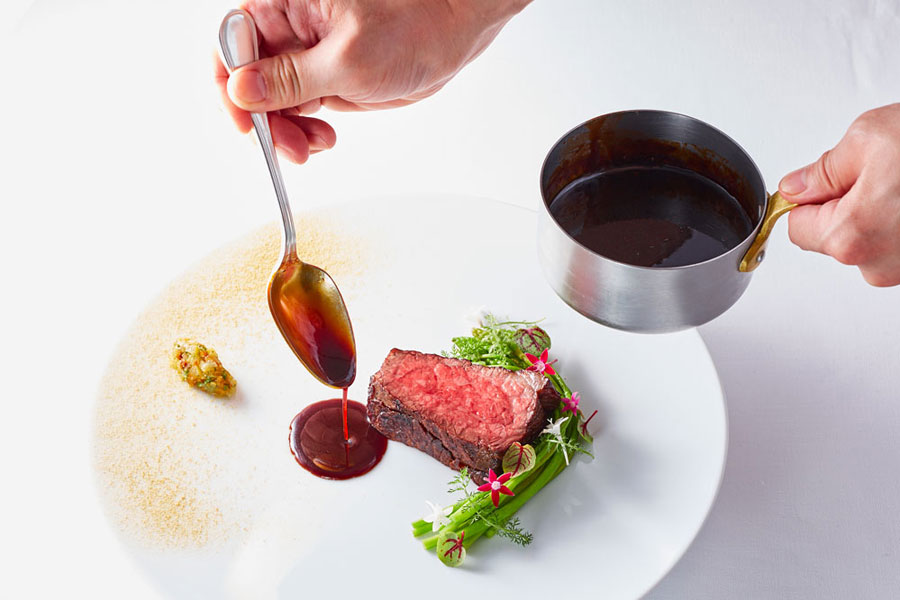
The meat dishes at Amour are not limited to beef. Amour also serves pork and chicken. With these meats as well, Chef Goto prefers to roast large blocks, which allows him to select and serve only the best cuts of meat. However, a course dinner featuring 12 or 13 different plates can leave the guest feeling rather full by the time the main dish is served.
This makes it important that a chef give due consideration to both ingredients and preparation methods to ensure the guest eats everything.
"When I prepare meat dishes, I am particularly careful with how I introduce heat to the ingredients. This enables me to offer more delicious food. This goes for not only meat, but all ingredients. I full advantage of the ingredients we serve to ensure guests enjoy the optimal flavor for each ingredient. I focus on using a wide range of Japanese ingredients in pursuit of Japan-inspired French cuisine that is unique to Amour."
Goto Chef went all in on his concept of "Japanese French" in 2016, when he relocated the restaurant he'd originally opened in Nishiazabu in 2012 to its current location in Ebisu. In June, the restaurant, a converted two-story home, boasts the vibrant greenery of a garden presenting the signs of early summer. When searching for property back in 2016, Goto knew he'd found the right location the moment he stepped into this garden. Amour is the representation of Goto's vision, and he has incorporated that vision into every aspect of the restaurant, from building renovations and interior decoration to the restaurant's service style and menu concept.
"Some guests hesitate at the idea of a main dish featuring sirloin because they worry the course will be too heavy. However, I am always confident in offering this roast. Needless to say, every customer completely finishes their plate, roast included. This is indicative of how light and refreshing the fat of this beef is."
Incorporating the concept of Japanese French into his restaurant development, Chef Goto grew more confident in his concept but, up to two years ago, he was still in search of the ideal beef to match with this concept. It was around this time that Goto encountered the beef of Nobels Foods. At the time, N34 was not yet an official brand and Nobels Foods was still trying to define a new standard in beef.
"I was somewhat suspicious of most meats. However, when I tried it, the beef was tender with a mild-tasting fat. From there, I began sending more specific requests in pursuit of the beef with the ideal amount of marbling for my needs. I wanted the find the beef that best matched with my concept."
N34 sirloin roast
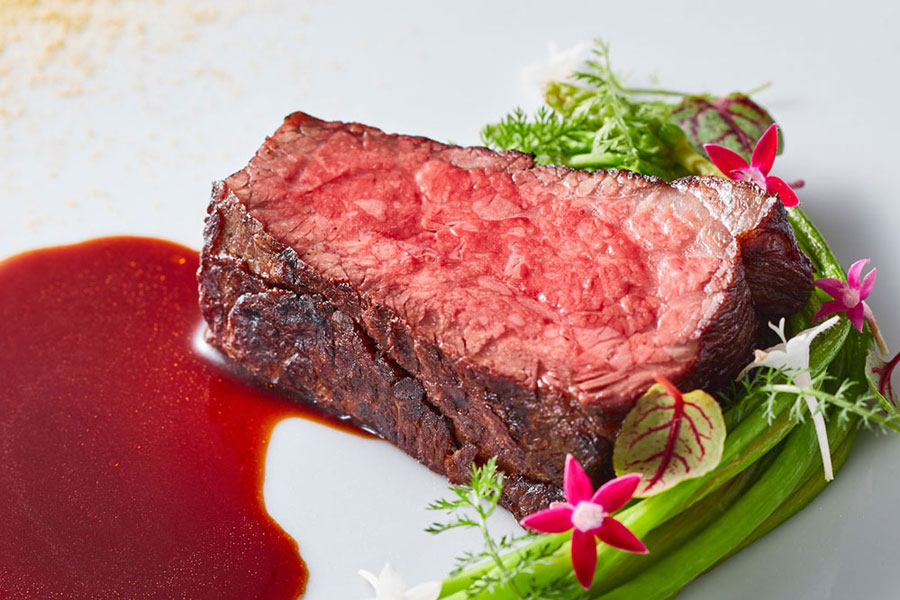
"As you move a slice of roast from the plate towards your mouth, your sense are treated to the flavorful aroma of beef. The tender texture is enveloped in the juiciness of the beef. The depth of flavor expands with each bite.This is combined with the aromatic tones of light yet flavorful fat. This combination of red meat and fat create a total experience. It was this tasting experience that led me to realize that I'd succeeded in creating the beef roast I've wanted to serve."
Today, roast beef made with N34 sirloin has become the signature dish at Amour. The result of painstaking trial and error, Chef Goto finally completed this dish some two years ago. At the time, nearly five years had passed since he first opened the doors of Amour.
This roast represents the epitome of my skills as a chef today. I am confident is saying that. The world of French cuisine is constantly evolving. Chefs compete to enhance their skills and incorporate modern trends. However, I don't believe there are many chefs out there making roasts using this method.
Beef block photos confirmed prior to shipping
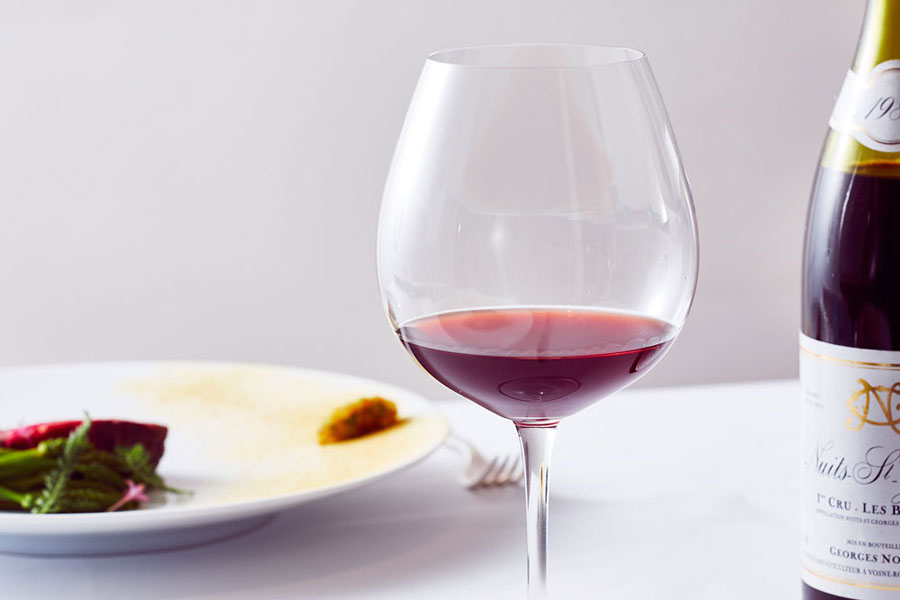
One of the characteristics of N34 is its deep red color, which is developed through a nurturing process that is longer than typical beef. This color resembles the garnet red color of a fine wine allowed to mature for years.
N34 sirloin is delivered to Chef Goto as a 3.5 kilogram beef block. Beef shipped as N34 is subject to a strict grading process based on proprietary standards. Goto is extremely particular about marbling fineness, so prior to shipment he has photos of the block of beef sent directly from Hokkaido, where N34 is produced. Goto uses this pre-shipment confirmation process to select his ideal block of beef.
"Consistency is critical when using beef as an ingredient. Meat profiles differ with each cow, even those raised in the same environment on the same feed. This grading process helps prevent inconsistency."
On days with a reservation for a roast, Chef Goto carefully checks the condition of the beef block before carving it up into smaller blocks for easier preparation and serving. These smaller blocks are immersed into an oil bath maintained at 50 degrees Celsius. The beef is slow-cooked for one to two hours. This slow-cooking process ensures even heating through to the center of the beef.
The most unique aspect of Chef Goto's preparation method is his roasting. Previously, Goto applied cooking methods typical for French chefs; using oil or butter to sear the beef in a skillet. However, Goto began to feel that even just the aroma of butter interfered with the experience of enjoying the true flavor of the beef.
"I was thinking of ways of searing without using oil. Then, one day, I decided to try charcoal grilling."
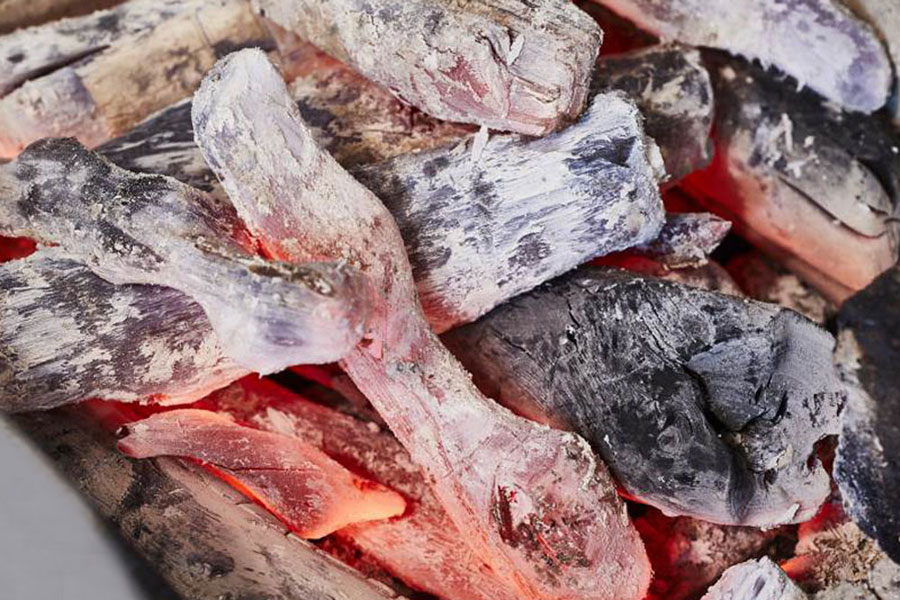
Charcoal grilling is a traditional method of cooking in Japan. Among the different types of coal, Chef Goto prefers binchotan, a high-grade charcoal produced from Japanese oak. Binchotan has strong heat retention properties, making it capable of sustaining high temperatures stably for a long period of time.
Amour features a dedicated charcoal grill. Embers already lit, the grill is ready for cooking. Chef Goto places the block of N34 sirloin on wire mesh and carries it over to the grill. The block sizzles over the high heat of the bright red charcoal. Goto meticulously adjusts the angle of the meat to ensure an even sear. Juices emerge flowing from the block of sirloin. Fat dripping from the surface of the sirloin are heated by the charcoal, turning instantly into white smoke.
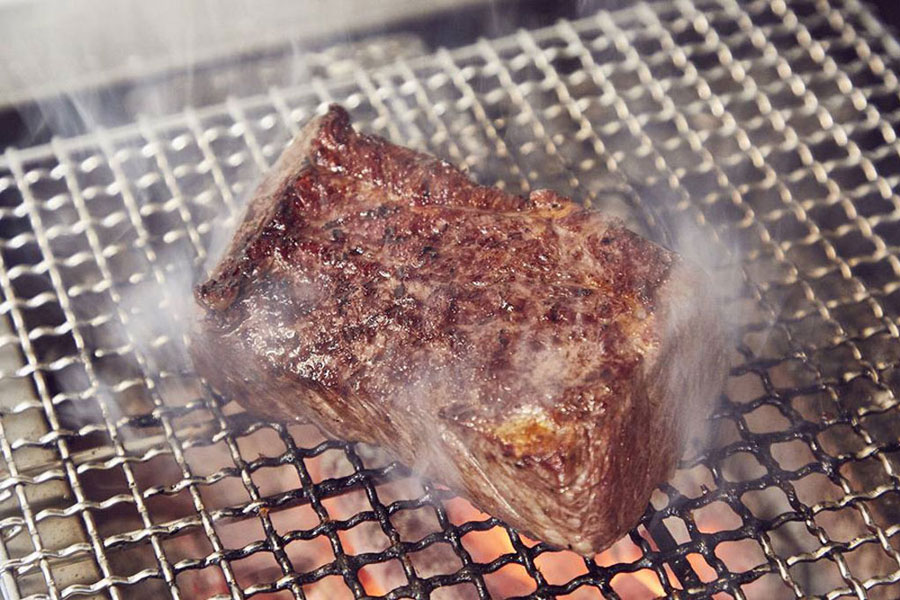
"The sirloin block is packed with juices. One way to describe it is as if the juices are dancing inside the block of meat. Meanwhile, the fat dripping onto the coals has the effect of smoking the meat. This process also removes excess fat to intensify both the flavor and aroma of the beef.
Chef Goto continues this process until the beef is thoroughly seared on all sides. Fat trimmed from the beef block earlier has been melted down in a sauce pan. During searing, Goto uses a brush to apply the melted down fat, which serves as a coating that prevents the beef from drying out. After a few cycles of grilling and coating, Goto removes the block from the grill and allows it to rest for several minutes. Allowing the beef to cool to the ideal temperature prevents juices from flowing the meat is cut.
Next, Chef Goto places the roast in a cast iron pot lined with straw. He places the lid on the pot and heats it at a high temperature. The heated straw creates a smoke that envelops the roast. At this point, Goto makes his way with the pot to the guest's table for a memorable presentation.
Your main dish today is roast of beef sirloin."
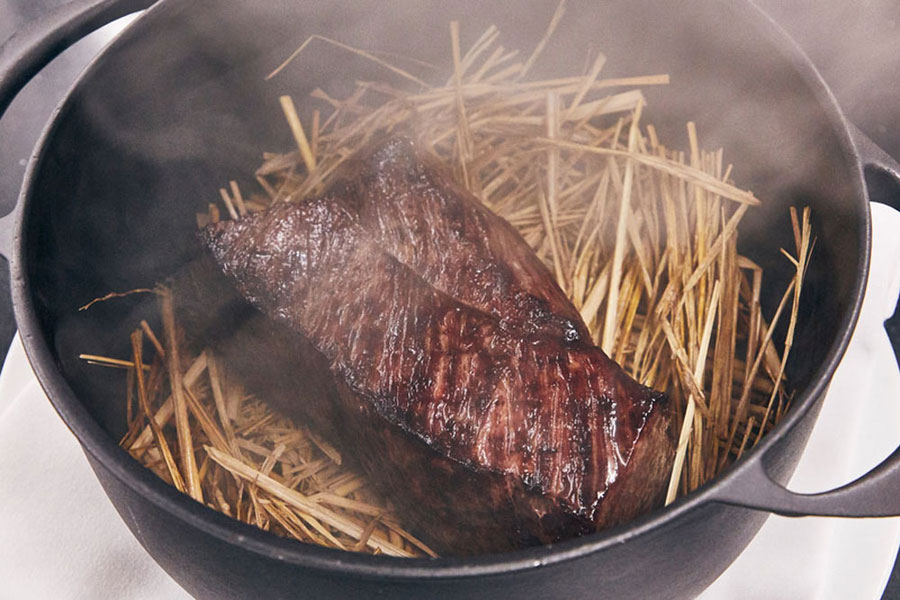
With all eyes on the pot, Chef Goto removes the lid to release a plume of white steam with a mildly sweet and robust aroma that fills the entire dining area. The performance surely serves to further stimulate the hunger of the guests. Guests at nearby tables cannot help but be filled with curiosity at Goto's performance. After presenting the dish, Chef Goto removes the roast from the pot, then quickly slices and plates the beef.
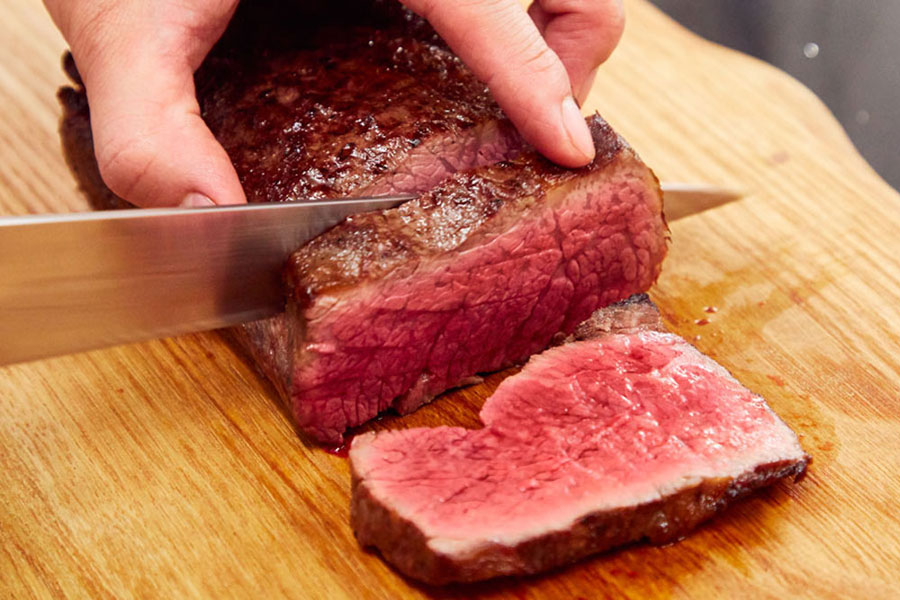
"This is my own original preparation method." Introducing the robustness of charcoal and the sweet aroma of the grass elevates the taste of the beef."
-
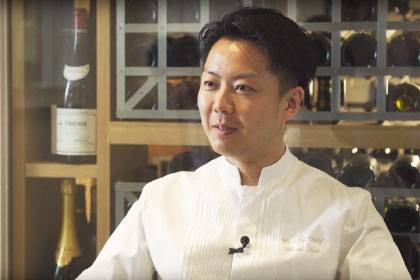
Yusuke GotoExecutive Chef of Amour, a French restaurant in Ebisu, Tokyo. Born in Tokyo 1979. Received Michelin 1-star rating six months after opening Amour in 2012 and has maintained this rating for the six consecutive years since then.
-

AMOUR1-6-13 Hiroo, Shibuya-ku, Tokyo 150-0012 TEL : +81-3-3409-1331
https://www.amourtokyojapan.com -
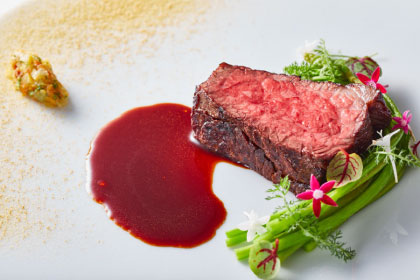
How to request N34Dinner is limited to three courses. The N34 sirloin roast is only offered as with the most expensive course. Even still, Chef Goto's roast is so delicious that it is a favorite among repeat customers.
